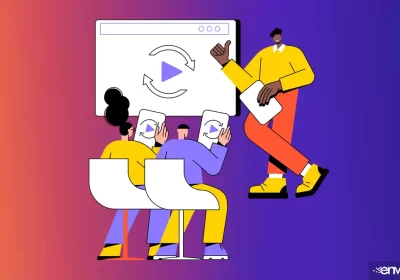Long Tail SEO: How To Use Internal Links In Content

A quick Google search will tell you a lot about how you boost your SEO strategy. There’s tons of information out there about things like data examination through end-user value. However, one particular aspect of the trade that most people tend to forget about is internal linking.
While the practice of internal links is vital to SEO, it’s often overlooked.
Long Tail SEO Strategy
You should always consider the value of your blog posts to your readers. How much insight and value does your posts offer them? To offer your audience more bang for their buck, share links to previously written articles before creating internal links.
Read on to learn about leveraging the power of internal linking for your long tail SEO strategy.
Long Tail SEO Definition
By definition, long tail SEO refers to a technique for generating high value organic website traffic. Fundamentally, to implement long tail SEO, it has to contain three to five words.
Ideally, you also want these search terms to have a lower competition rate, cost-per-click, and search volume. By doing so, you should recognize that you register higher conversion rates than if you had chosen short tail keywords.
Why Use Long Tail Keywords?
About 70% of all search traffic originates from long tail keywords. If you’re aiming for a purposeful SEO strategy, then you don’t want to miss out on this source of traffic. But that’s not all. Here are a few more reasons why you should use long tail keywords:
Connect With Your Audience Faster
Long tail keywords helps you resonate with your target audience faster than short tail keywords. This is because long tail keywords emphasize specific intents and actions behind a search.
Since specificity is key, you want to understand the motivations behind the different keywords your target audience would use. Once you’re clear on this, it’s easier to connect with your clients and offer them the services they need.
Lower Search Competition
Short tail keywords ten to point to several directions all at once. And since you want to grow your brand name, it’s better to avoid this practice. Instead, choose a more laser focused approach that has a lower level of competition.
You’ll find it easier to compete with other brands in your industry. Plus, you’ll be making use of effective keywords to get the results you want. Depending on your motivations, examples of actions you aim for include more newsletter sign ups, more downloads, etc. But keep in mind that your long tail keywords need to feature narrower intent and fewer searches to outrank the competition.
Better Conversion Rates
Studies show that long tail SEO can enhance your conversion rate by more than 35 percent. Of course, you’ll need to optimize your website to include relevant search terms that agree with your target audience.
Since you’ll be ranking for keywords that offer more value to prospects, you can expect a rise in traffic numbers also. Even more good news! You’ll be able to guide leads further down your sales funnel.
Reduced Expenditure
Compared to long tail keywords, short tail keywords are more expensive to run ads. This is because your business will face competition from other businesses looking to rank for that same keyword.
The fact that your business faces less competition due to ranking for specific intents, odds are, you’re see a higher ROI.
Capitalizing on Voice search
Today, voice search is all the rage. By implementing a long tail SEO strategy, you appeal to a larger audience. Why? Because thanks to word of mouth, most voice search users are adept to making long tail search queries. Also, with long tail keywords, you can better communicate with your target audience. And since you register better revenue, factor in voice search as a source of income.
Conversely, if you choose to focus on short tail keywords, you’ll miss out on this market demographic.
What are Internal Links?
Internal links are hyperlinks that point to another page on the same domain/website. Using links on your website makes it easy for both users and search engines to find content on your website.
It’s important to note that there are different kinds of internal links. Other than links you share on your homepage or menu, you can also feature links within your blog content.
This type of linking is called contextual. They are quite effective in the current scene because they point users to related and interesting content. Notably, they also facilitate search engines to establish what content on your website is related. Also, weigh the value of content shared.
By featuring internal links on pages, search engines will take this as a signal that your website has value. Since you want to rank for the right things, you must implement internal linking in your SEO strategy.
Wrapping it Up
It’s not rocket science to see the role internal linking plays in long tail SEO. Without internal links, your page won’t rank favorably. The pointers shared in this review can help both your users and Google better understand your website. To this end, we’re confident you’ll find it easier to connect with your audience and rank higher in search results.
You may also enjoy reading: How Small Business Can Overcome Digital Marketing Cyber Security Challenges

Hazel Burgess
FOUNDER/SEO DIRECTOR
Hazel is the Founder & SEO Director at Envisager Studio, a premier website design agency specializing in WordPress website design, development and internet marketing. In her spare time, she writes about search engine optimization, website design, and internet marketing.


